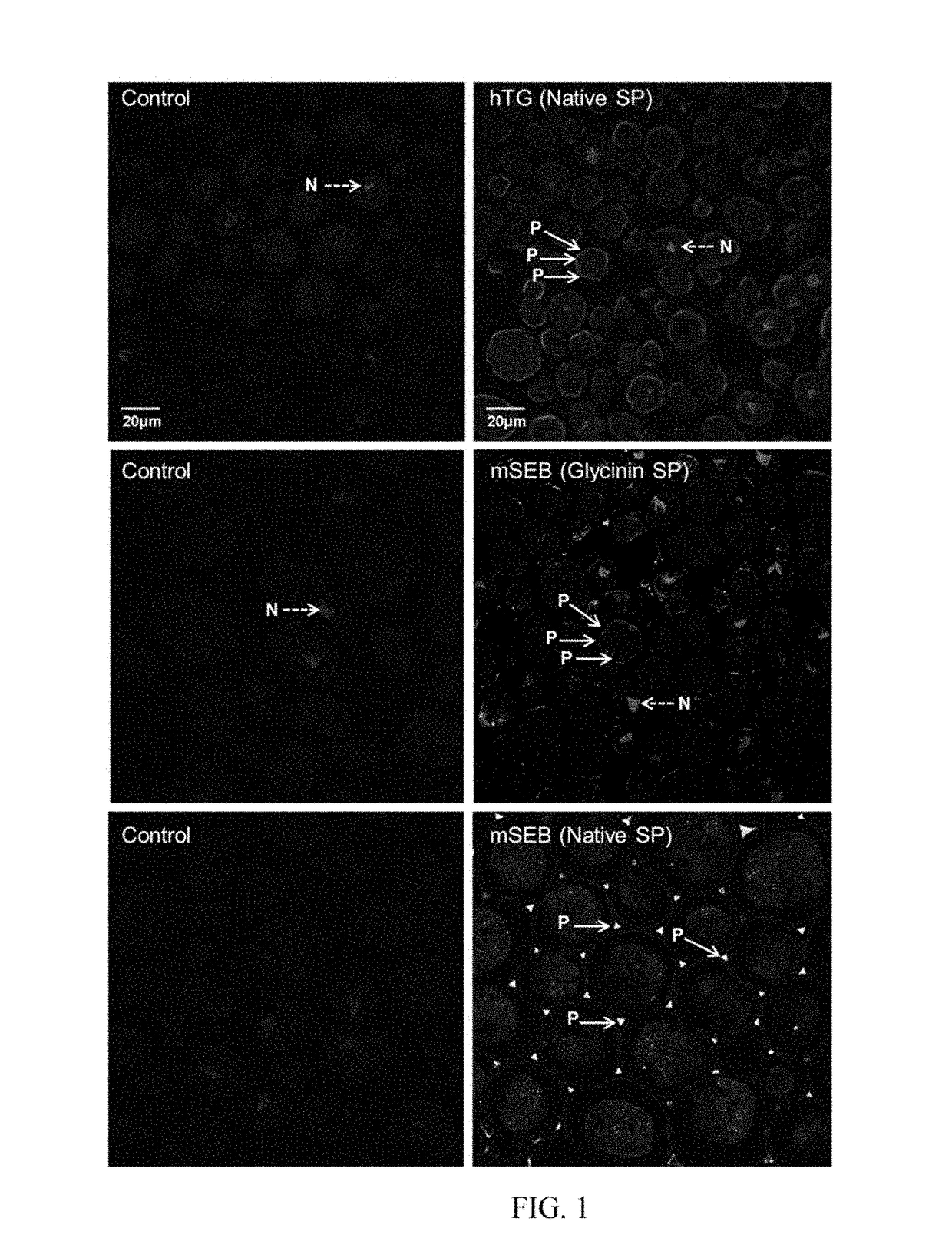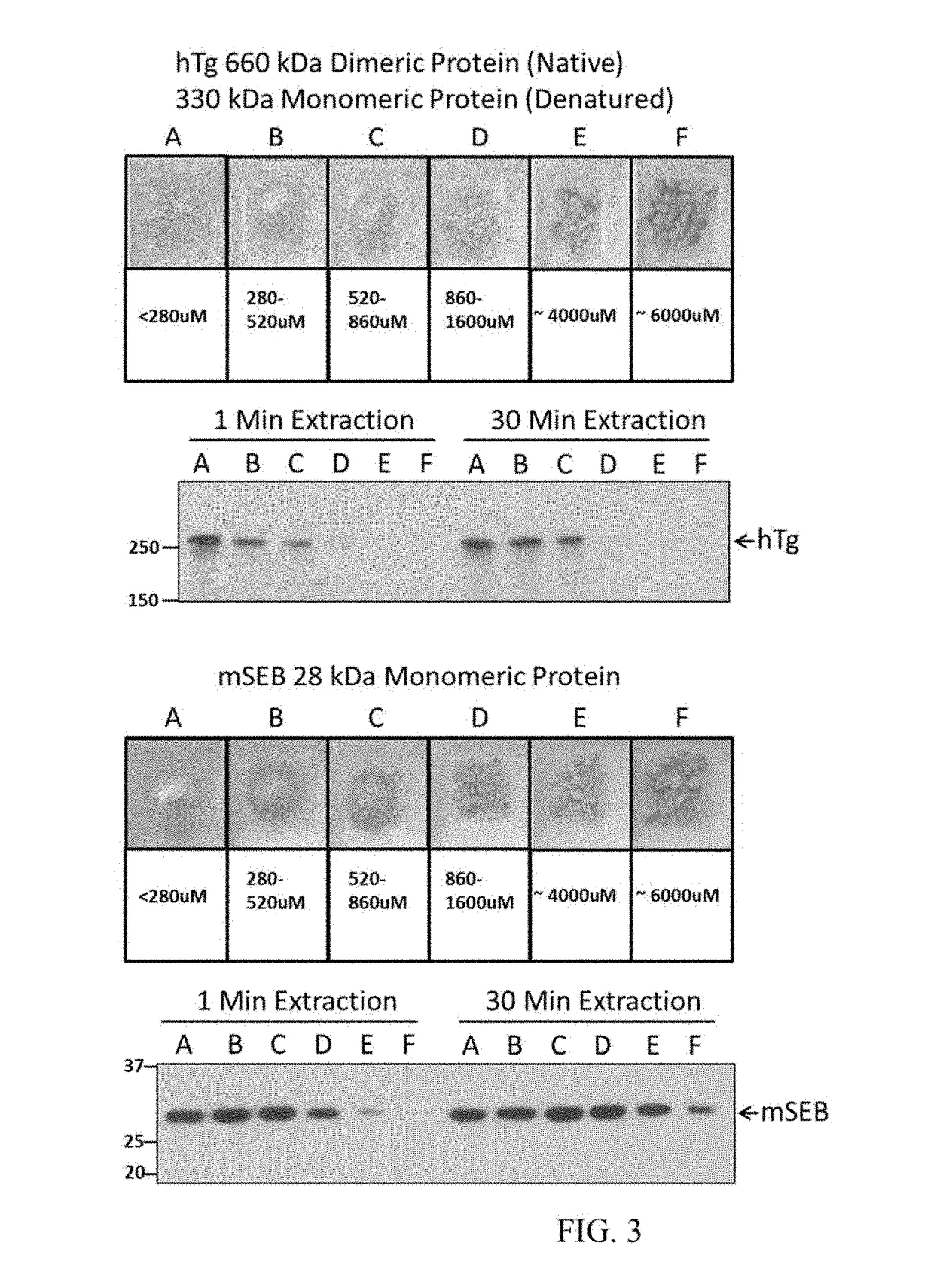Presently there is little flexibility in commercial processes that seek to degrade
lignocellulosic biomass into
usable fuels or improved animal feeds.
At present, no such platform, theoretical or real, has been reduced to practice as an economically feasible process.
The focus on cellulosic fractions for fuels and feeds results from the inability to incorporate
enzymatic degradation of
lignin and
hemicellulose into industrial processes in a manner that is cost-effective, efficient, and practical.
Converting lignocellulosic plant
biomass into useful byproducts, such as
usable biofuels and detoxifying certain polycyclic
hydrocarbon organopollutants poses many challenges.
These treatments require specialized facilities for safely handling and disposing of hazardous chemicals, resulting in increased costs and environmental concerns.
At present, there does not seem to be any realistic alternative to chemical and heat pretreatments since viable or killed microbial
enzyme preparations are inefficient, and the expression of numerous recombinant enzymes in bulk is impracticable.
The low yield / high cost of this process has impeded widespread commercial application, either by the paper industry or by theoretical
cellulosic ethanol manufacturers.
While numerous enzymes have been identified which can break down
lignin, none are presently used in commercial processes for producing
cellulosic ethanol.
The enzymatic
lignin degradation is limited by the recalcitrance of its aromatic backbone which requires production of a cocktail of enzymes by various prokaryotes and eukaryotes which use this material as an
energy source.
Unfortunately, the use of such enzyme cocktails for the degradation of lignin in commercial cellulosic
ethanol production remains impractical due to enzyme cost, enzyme availability, the time required for biomass reduction, and a lack of protocols which define the required quantities of
specific enzyme combinations added sequentially for each particular
plant species.
Unfortunately, the use of such enzyme cocktails for the degradation of
hemicellulose in commercial cellulosic
ethanol production remains largely impractical due to enzyme cost, enzyme availability, and a lack of protocols which define the required quantities of
specific enzyme combinations added sequentially for each particular
plant species.
Unfortunately, the use of a larger variety of enzyme cocktails for the degradation of
cellulose in commercial cellulosic
ethanol production remains largely impractical due to enzyme cost, enzyme availability, and a lack of protocols which define the required quantities of
specific enzyme combinations added sequentially for each particular
plant species.
Since current methods using chemical and enzymatic lignin /
hemicellulose removal and
cellulose hydrolysis are too expensive and inefficient to support commercial-scale lignocellulosic ethanol production, efforts for
industrial scale lignocellulose deconstruction continue to focus on identifying platforms for manufacturing individual enzymes in a cost-effective manner that allows flexibility in cocktail composition, ease of application, and long term storage in the absence of a
cold chain.
Individual or recombinant enzymes are not presently practical since they are not cost-efficient, have a limited
shelf life, and often have cold-storage requirements.
Due to the impracticality of using recombinant proteins, enzymes are typically produced in large bioreactors by plant-degrading fungi (e.g.
Trichoderma reesei) that secrete cellulases and other enzymes during their growth.
The
shelf life for such preparations is limited with storage conditions recommended at 4-8° C.
The inability of current manufacturing protocols to produce enzyme preparations with long term storage capability in the absence of a
cold chain represents significant challenges for
biorefinery design and significant supply chain concerns when scheduling batch deconstruction of lignocellulosic biomass.
Another challenge when designing biorefineries that deconstruct lignocellulose biomass for fuel is deciding upon the method to be used for
enzymatic degradation of cellulose.
Limitations of this process include end product accumulation which interferes with
hydrolysis.
Unfortunately, the
reaction conditions required for these enzyme cocktails are not optimal in pH or temperature for industry-standard
yeast-based fermentations, and vice versa.
A modified SSF model using filamentous fungi for both
hydrolysis and
fermentation has not been successful due to the low ethanol conversion and the production of unwanted acid by-products.
Furthermore, SSF protocols do not allow for in situ deconstruction of lignin or hemicellulose Unfortunately, the
reaction conditions required for these enzyme cocktails are not optimal for
Saccharomyces cerevisiae-based fermentations, and vice versa.
Furthermore, SSF protocols do not allow for in situ deconstruction of lignin or hemicellulose.
It is difficult to imagine a single reaction vessel that could efficiently achieve simultaneous ligninification, hemicellulosification, saccharification, and
fermentation.
While such
processing steps have been theorized or explored at a
laboratory scale, the practicality of sequential enzymatic
processing fails due to the lack of a platform for manufacturing individual enzymes in a cost-effective manner that allows flexibility in cocktail composition, ease of application, and long term storage in the absence of a cold chain.
Presently, the logistics of continually maintaining stockpiles of various lignocellulosic degrading enzymes using current manufacturing processes and long-term storage requirements seems unlikely.
Currently, there are no
protein manufacturing platforms which can provide such advantages.
Challenges for natural microbes producing various enzymes include the necessity to use inducing agents to express the desired enzymes, the difficulty in controlling individual enzyme ratios, and suppression of enzyme activity by end product accumulation.
Batch to batch differences in composition due variability in induction can also be problematic.
Controlling the optimal ratios of each constitutively expressed enzyme needed within a cocktail will be quite difficult to accomplish in such engineered microbes.
At this point, a limited
shelf life and / or
cold storage requirements add to the costs of goods and reduce the flexibility in shipping or long-term storage of enzyme preparations for future use.
Such technology is currently available, but has not been utilized on an
industrial scale.
Reasons for a lack of utilization can include the high cost of production and concentration, enzyme yields, limited shelf life, or the need for a cold chain.
Still other recombinant enzymes truncate prematurely when being expressed in some systems.
Taken together, it is difficult to imagine the
sustainability of continually maintaining stockpiles of lignocellulosic degrading enzymes using current manufacturing practices whether the platform is microbial cultures or more conventional
recombinant expression.
Despite two decades of research and development, no industrial scale applications for plant expressed lignocellulosic degrading enzymes have currently been realized.
When active enzymes were expressed in plant tissues, problems were observed with
autocatalysis affecting viability, growth, or
fertility.
Despite these advances, several limitations and uncertainties remain for the viability of in planta manufacturing of recombinant lignocellulosic enzymes.
First, some proteins do not seem to be easily expressed in some platforms.
Assuming that one can target a particular enzyme to a tissue that allows viable
plant growth, there still seem to be limitations in some expression systems.
For example, difficulties in achieving
high level expression of some full length enzymes have been reported.
At present, in the plants that have been used, it is not clear which platform will be most robust for such proteins which will likely be difficult to express.
Second, assuming an enzyme can be expressed in a particular
plant system, it is not always clear whether that enzyme is expressed at a level sufficient for commercial viability.
Difficulties in determining absolute
protein expression levels stem from variability in reporting yields.
However, the absolute yield of enzyme relative to the original plant biomass that must be harvested and processed may be modest.
Furthermore, the amount of enzyme present as a percentage of total soluble protein often requires some form of partial
protein purification, concentration, or other reduction of the plant biomass.
Therefore, determining the amount, or activity, of an enzyme actually present in a given
mass of harvested plant material is often difficult.
Third, it is often not clear what level of post-harvest
processing will be required to obtain a marketable enzyme or enzyme preparation.
The need to remove excess
plant tissue or concentrate enzymes prior to their utilization limits commercial viability.
This may be challenging for those partially purified enzymes preparations supplied in
solid form with contaminating biomass if there was no easy method to assure homogeneity prior to solubilization.
Maintaining inter-lot consistency would seem more difficult for those platforms that require post-harvest processing, as consistent activity to biomass ratios would be affected by variations in concentration and / or purification methodologies.
Presently, no such protocols for easily constructing customizable lignocellulosic enzyme compositions exist.
However the long term stability of a stored enzyme preparation is rarely demonstrated.
The ability to store enzyme preparations for years to decades in the absence of a cold chain and without a significant loss of activity cannot currently be achieved.
Unfortunately, no current platform technology can produce enzymes in a form that is stable long-term at ambient storage temperatures.
Seventh, a platform technology for in planta expression of individual lignocellulosic degrading enzymes will not be commercially viable if it is not cost-effective.
To date, no platform has demonstrated such viability for generating cellulosic ethanol.
However, this solution does not address lignocellulosic degradation of any non-genetically modified plant biomass.
It is difficult to express recombinant forms of these enzymes in traditional systems (e.g. E. coli,
yeast,
mammalian cell cultures, etc.) for a variety of reasons, including improper folding, a requirement for cofactors (e.g.
manganese,
heme), and associated production and / or purification costs that are not practical and sustainable for industrial applications.
While fungi produce these important enzymes, many of the species are not culturable.
Furthermore, the level of protein in fungi is relatively low, making it a less than ideal
bioreactor for the production of enzymatic proteins.
Unfortunately, these technologies are expensive and have application limits that hinder industry.
At present, there does not seem to be any realistic alternative to chemical and heat pretreatments since viable or killed microbial enzyme preparations are inefficient, and the expression of numerous recombinant enzymes in bulk is impracticable.
While incremental steps are being made to overcome these limitations, it is unclear if such small advances will be sufficient to make pragmatic changes in current biomass processing.
These drawbacks are primary factors inhibiting the
sustainability of industries such as lignocellulosic ethanol production.
In fact, even with significant research in acid and isolated enzyme
hydrolysis, there is currently no significant industrial production of lignocellulosic ethanol in the United States.
Essentially, current production techniques are too expensive to support commercial interests and it appears that, despite enormous potential, lignocellulose bioprocessing will remain underutilized unless new processing technologies that are feasible and economical are developed.
 Login to View More
Login to View More  Login to View More
Login to View More 


